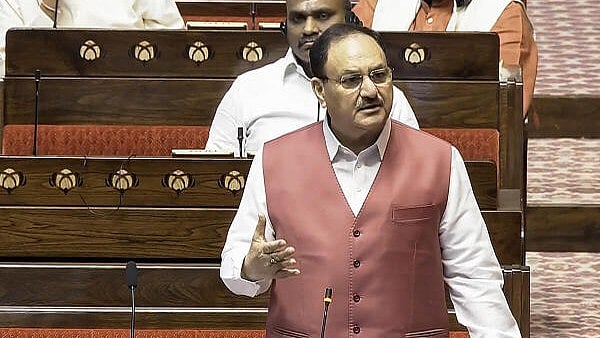
Union health Minister J P Nadda
Credit: PTI Photo
New Delhi, March 4: With lifestyle diseases on the rise, the screening of non-communicable diseases has gone up by almost ten times in the last five years in government health centres, Union Health Minister J P Nadda said here on Tuesday.
At a mission steering group meeting of the National Health Mission, the minister said the number of non-communicable disease screenings increased from 10.94 crores in 2019-20 to 109.55 crores in 2023-24 – in other words 10 times rise in five years.
However, it is not immediately known how many of the screened individuals have been found positive for diabetes, heart problems, respiratory issues or cancer. But there has been an increase in the wellness sessions and tele-consultation of doctors too.
The increase in the screening coincides with a sharp rise in annual footfall at Ayushman Arogya Mandirs – from 13.49 crores in 2019-20 to over 121 crores in 2023-24.
India’s primary NCDs include cardiovascular diseases, chronic respiratory diseases, cancers, and diabetes. They collectively represent the majority of morbidity and mortality associated with these diseases.
Health researchers have shown cardiovascular diseases, which include conditions such as coronary heart disease, stroke, and hypertension, account for approximately 45% of all NCD deaths in India, followed by chronic respiratory diseases (22%).
Cancers and diabetes are also significant contributors, each responsible for around 12% and 3% of NCD-related deaths, respectively. Other notable NCDs prevalent in India include dementia, hypertension, obesity, and overweight.
V K Paul, Advisor (Health) NITI Ayog said 105 medicines are available free of cost at sub-centre level Ayushman Arogya Mandirs while 172 free medicines are available at primary health centres.
More than 15,000 Jan Aushadhi Kendras are operational across the country and the plan is to open 25,000 such shops by 2026-27 to make quality medicines available at low cost.
Nadda said India achieved the National Health Policy target of having a maternal mortality rate of 100 deaths per one lakh live births. Between 1990 to 2020, India’s MMR declined 83% which is much higher than the global decline.
According to the latest sample registration survey report, India’s MMR stood at 97 per one lakh live births between 2018-20. It is less than 70 – the UN sustainable development goal – for eight states including all the five southern states.
